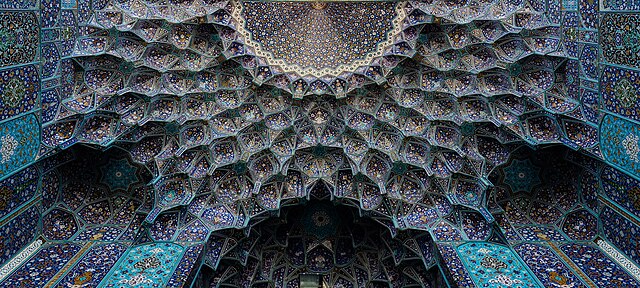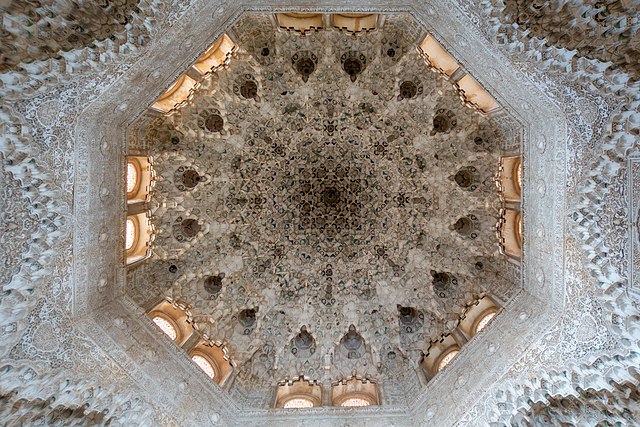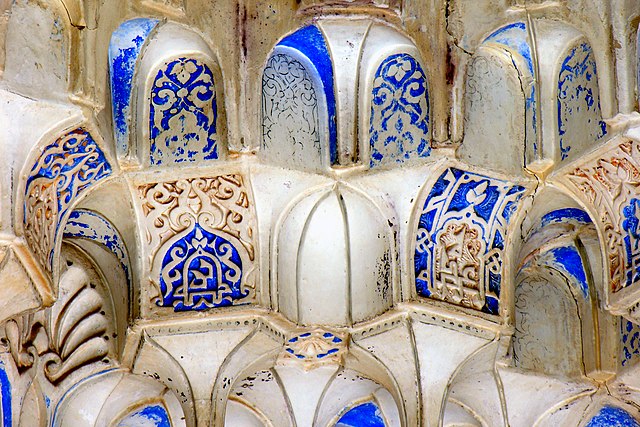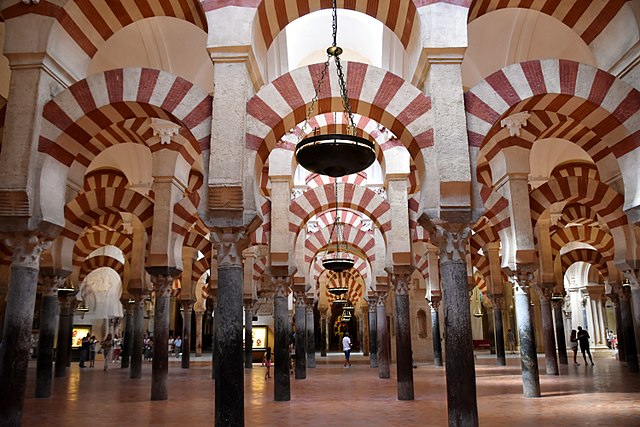Muqarnas, also known in Iberian architecture as Mocárabe, is a form of three-dimensional decoration in Islamic architecture in which rows or tiers of niche-like elements are projected over others below. It is an archetypal form of Islamic architecture, integral to the vernacular of Islamic buildings, and typically featured in domes and vaults, as well as iwans, entrance portals, or other niches. It is sometimes referred to as "honeycomb vaulting" or "stalactite vaulting".
Muqarnas as seen from below in the iwan entrance to the Shah Mosque in Isfahan, Iran (17th century)
Muqarnas dome in the Sala de Dos Hermanas at the Alhambra in Granada, Spain (14th century)
Close-up of muqarnas vaulting in the Alhambra (14th century) in Granada, Spain, showing horizontal courses of cells projecting over those below
Muqarnas vaulting covered with tilework, seen from below, in the iwan entrance of the Fatima Masumeh Shrine in Qom, Iran
Islamic architecture comprises the architectural styles of buildings associated with Islam. It encompasses both secular and religious styles from the early history of Islam to the present day. The Islamic world encompasses a wide geographic area historically ranging from western Africa and Europe to eastern Asia. Certain commonalities are shared by Islamic architectural styles across all these regions, but over time different regions developed their own styles according to local materials and techniques, local dynasties and patrons, different regional centers of artistic production, and sometimes different religious affiliations.
Image: Great Mosque of Cordoba, interior, 8th 10th centuries (38) (29721130342)
Image: 20180301124354 IMG 4179And 6more Interior 3
Image: Selimiye Mosque, Dome
The Mosque of the Prophet, standing on the site of Muhammad's first mosque in Medina. The present-day building is the result of many reconstructions and expansions up to modern times.








